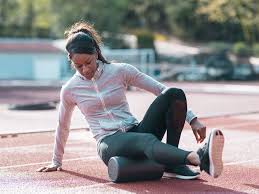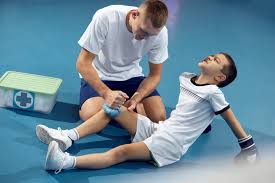Introduction
Athletic performance isn’t just about how hard you train — it’s also about how well you recover. Whether you’re a professional athlete or someone passionate about fitness, understanding the best recovery techniques can make a huge difference in your strength, endurance, and long-term health.
Recovery isn’t a sign of weakness; it’s a crucial part of every training program. It allows your muscles, mind, and body to rebuild stronger after each workout.

Why Recovery Is Important for Athletes
Recovery is the process where your body repairs damaged muscle fibers, replenishes energy stores, and adapts to physical stress. Without proper recovery, you risk fatigue, burnout, and injury.
Key Benefits of Recovery
- Faster muscle repair and growth
- Reduced soreness and inflammation
- Improved energy and endurance
- Better flexibility and mobility
- Sharper focus and improved sleep quality

Top Recovery Techniques for Athletes
1. Active Recovery
Active recovery means performing low-intensity activities after intense workouts. This helps increase blood flow, which flushes out lactic acid and speeds up healing.
Examples of Active Recovery
- Light jogging or cycling
- Yoga and stretching sessions
- Swimming or brisk walking
Active recovery keeps muscles moving without overloading them, promoting faster recovery.
2. Proper Hydration and Nutrition
After an intense workout, your body needs to rehydrate and refuel. During exercise, you lose fluids, electrolytes, and essential nutrients that must be replaced.
Post-Workout Nutrition Tips
- Drink plenty of water or electrolyte-rich drinks
- Eat a meal rich in protein and complex carbs
- Include foods like eggs, bananas, berries, and nuts
- Avoid processed and sugary snacks
Proper nutrition accelerates muscle recovery and supports growth.
3. Quality Sleep
Sleep is one of the most powerful recovery tools. During deep sleep, your body releases growth hormones that repair muscles and restore energy.
Tips for Better Sleep
- Get 7–9 hours of quality sleep each night
- Go to bed and wake up at the same time daily
- Avoid screens an hour before bedtime
- Keep your bedroom cool, dark, and quiet
A good night’s sleep helps you train harder and recover faster.
4. Massage Therapy
Massage reduces muscle tension, enhances flexibility, and improves circulation. It also decreases stress hormones, allowing your body and mind to relax.
Types of Massage
- Deep tissue massage
- Sports massage
- Foam rolling or self-massage
Getting regular massages can prevent stiffness and soreness while improving recovery time.
5. Cold and Heat Therapy
Temperature-based therapies are simple yet powerful recovery tools.
Cold Therapy (Cryotherapy)
- Reduces inflammation and muscle soreness
- Ideal right after heavy training or competition
Heat Therapy
- Improves blood flow and relaxes tight muscles
- Best for recovery days or chronic tension
💡 Pro Tip: Alternate between hot and cold therapy for the best results.
6. Compression Garments
Compression socks, sleeves, or tights improve blood flow and reduce swelling. Many athletes wear them after training to reduce fatigue and accelerate recovery.
7. Stretching and Mobility Work
Stretching keeps muscles flexible and reduces tightness. Doing both dynamic stretches before and static stretches after workouts can improve performance and prevent injuries.
Effective Practices
- Dynamic stretching before workouts
- Static stretching after training
- Foam rolling for myofascial release
8. Mindfulness and Mental Recovery
Physical recovery is just one side of the story — mental recovery is equally important. Stress management through mindfulness, meditation, and deep breathing helps athletes maintain motivation, reduce anxiety, and improve focus.
When your mind is balanced, your performance improves too.
Tips to Build an Effective Recovery Routine
- Schedule recovery days each week
- Listen to your body and avoid overtraining
- Combine different recovery methods
- Track your sleep, hydration, and nutrition
Consistency is key — even small recovery habits can make a big difference over time.
FAQs About Recovery Techniques for Athletes
Conclusion
The best recovery techniques for athletes combine science, discipline, and self-awareness. From proper sleep and nutrition to active recovery and mindfulness, each method strengthens your body for long-term success.
Remember: Training makes you strong — recovery makes you better. Prioritize recovery as much as your workouts, and you’ll notice lasting improvements in endurance, strength, and overall well-being.
